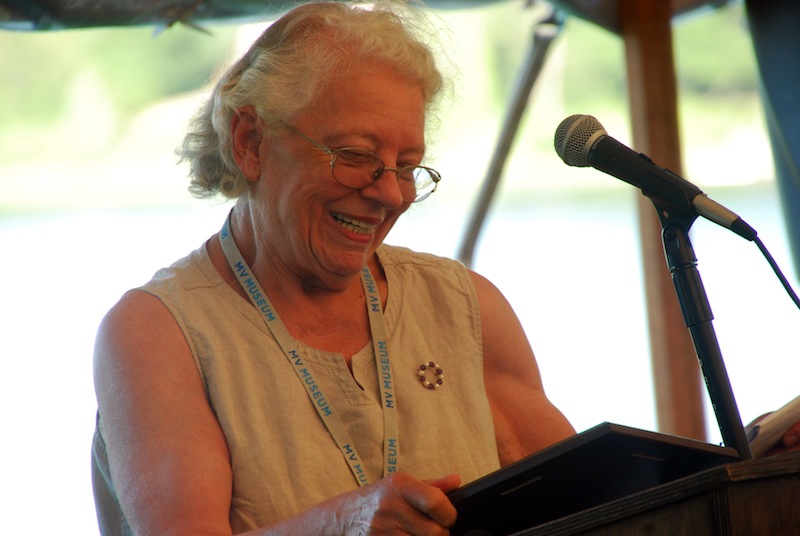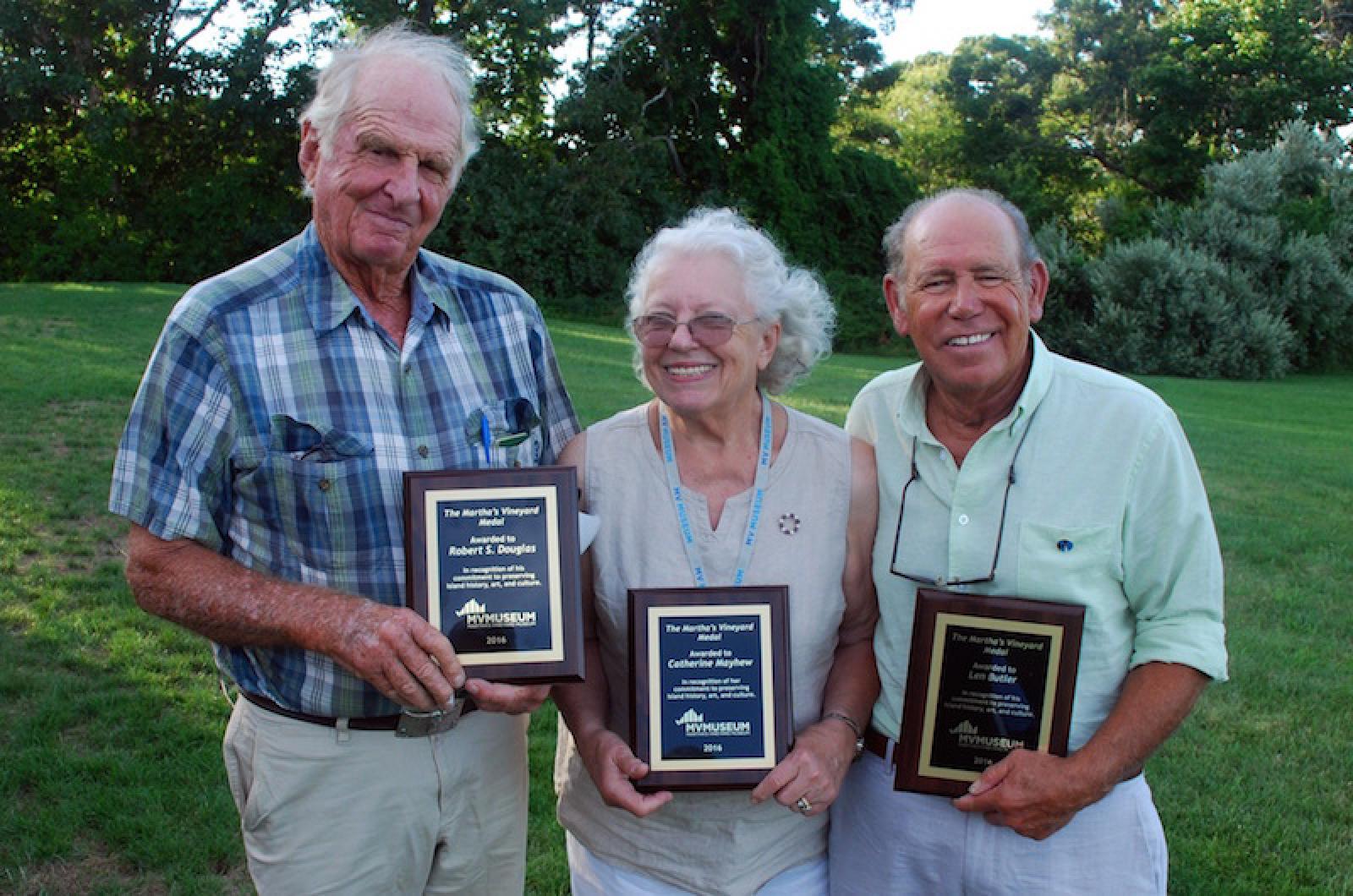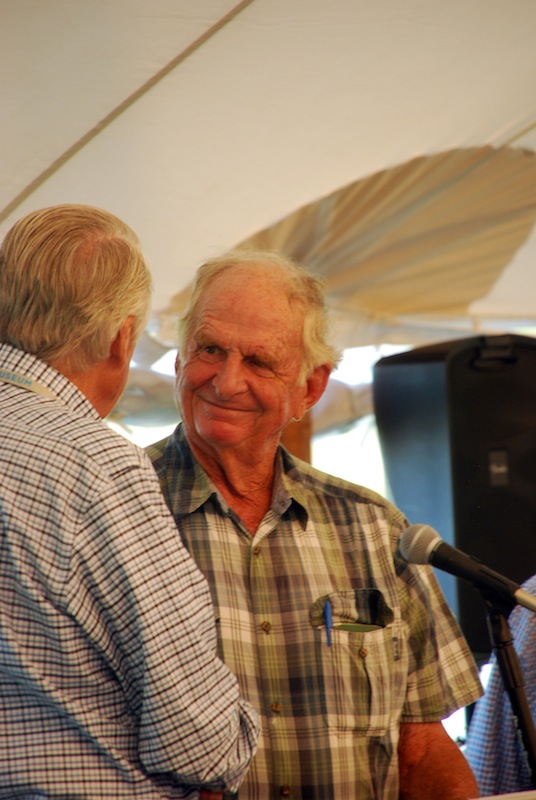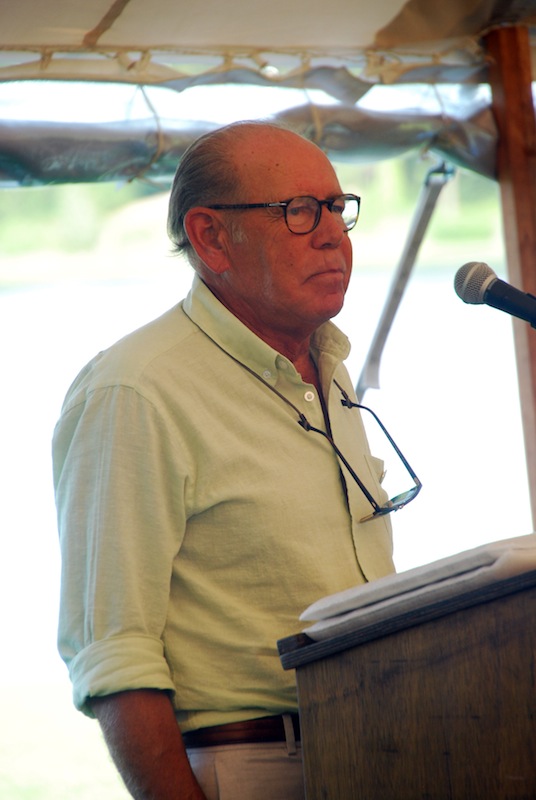The Martha’s Vineyard Museum recently honored three Vineyard residents for their service to the Island.
At a ceremony earlier this month, Len Butler, Robert S. Douglas and Catherine (Kay) Mayhew each received a 2016 Martha’s Vineyard Medal. The medal honors residents who have contributed to the history, arts and culture of the Island.

Mr. Butler played a lead role in relocating the Gay Head Light last year, serving as chairman of the lighthouse relocation committee, navigating reams of bureaucratic red tape and poring over the lighthouse structure and geology of the nearby eroding cliffs. Through it all, he maintained his day job as a senior site supervisor at John G. Early Construction, where he has worked since 1972.
A museum video of the event was made available to the Gazette.
“The Gay Head Light was moved by love,” said lightkeeper Richard Skidmore who presented the award and noted that the project relied on volunteers. “Len Butler was at the center of the beating heart of this tremendous enterprise.”
Mr. Butler in turn recognized Mr. Skidmore for spearheading the project four years ago, and the many others who helped make it happen.
“This speaks to the shared maritime heritage that the Island community has,” he said of the community effort. “Our forefathers — people from Tisbury and Edgartown, all the ships’ captains, all the lightkeepers, — they are all connected to this lighthouse. It couldn’t have happened without them.”
“It remains today, through the efforts of all the people involved, sitting proud and tall atop the Gay Head Cliffs,” he added. “And that light shall shine for generations of Vineyarders to come.”
Mr. Douglas has long ties to the Island maritime culture. The captain of the schooner Shenandoah, which he designed and built in the 1960s, has helped thousands of school children learn about sailing and life at sea. He also founded The Black Dog company, whose flags fly on the masts of both the Shenandoah and the schooner Alabama, acquired in 1967.
Longtime friend Denys Wortman bestowed the honor in the absence of boatbuilder Nat Benjamin, who was unable to attend.
“Kids who live on this wonderful Island, so many of them have had that great, great opportunity to experience being on the water and learning how to sail,” Mr. Wortman said.
A member of the audience pointed over Mr. Wortman’s shoulder at the Shenandoah sailing by in the Lagoon.
“Like magic,” he said.
Mr. Douglas spoke about his life on the Island and his work with Island schools. “I had almost figured I didn’t deserve any honors in this department,” he said. “I’ve been doing exactly as I’ve wanted to do for the last 53 summers.”
He recalled spending a year and three months building the ship, and its arrival on Martha’s Vineyard on July 12, 1964. “It’s turned out to be one of those win-win situations,” he said. “I’ve lived on the Vineyard since 1958 . . . and I take out all the Vineyard kids that I can.”
Martha’s Vineyard Museum curator Anna Carringer recognized Mrs. Mayhew for her nearly 30 years of service as genealogist for the museum, formerly the Dukes County Historical Society. Mrs. Mayhew also served as secretary of the board of directors for many years.
Ms. Carringer recalled her first encounter with Mrs. Mayhew, who was engaged in a spirited discussion among binders and folders in the library several years ago.
“I could tell immediately that this was a woman of great knowledge and also someone that would put up with very little nonsense,” Ms. Carringer said. “In the years since, I have looked to Kay countless times for help with research. And Kay the detective, the archaeologist of family trees, has always found the answer.”
Mrs. Mayhew shared stories of encounters and assignments over the years, including the challenges of tracking down Islanders who served in the World Wars (the Army could only say who survived) and being asked to identify 110 daguerrotypes of whaling captains.
“Genealogy is a matter of solving puzzles,” Mrs. Mayhew said. “I’ve traced Mayhews from the Island to Alabama and all over the world. I found Mayhew, Mississippi, where an Indian mission was named for Thomas Mayhew Jr. over 150 years after that remarkable man died.”
Over the years, Mrs. Mayhew has volunteered more than 17,000 hours to the museum.
Museum director Phil Wallis thanked the three recipients for their commitment to the life of the Island. “We carry that forward as a beacon as we move forward to the next chapter,” he said.









Comments (1)
Comments
Comment policy »